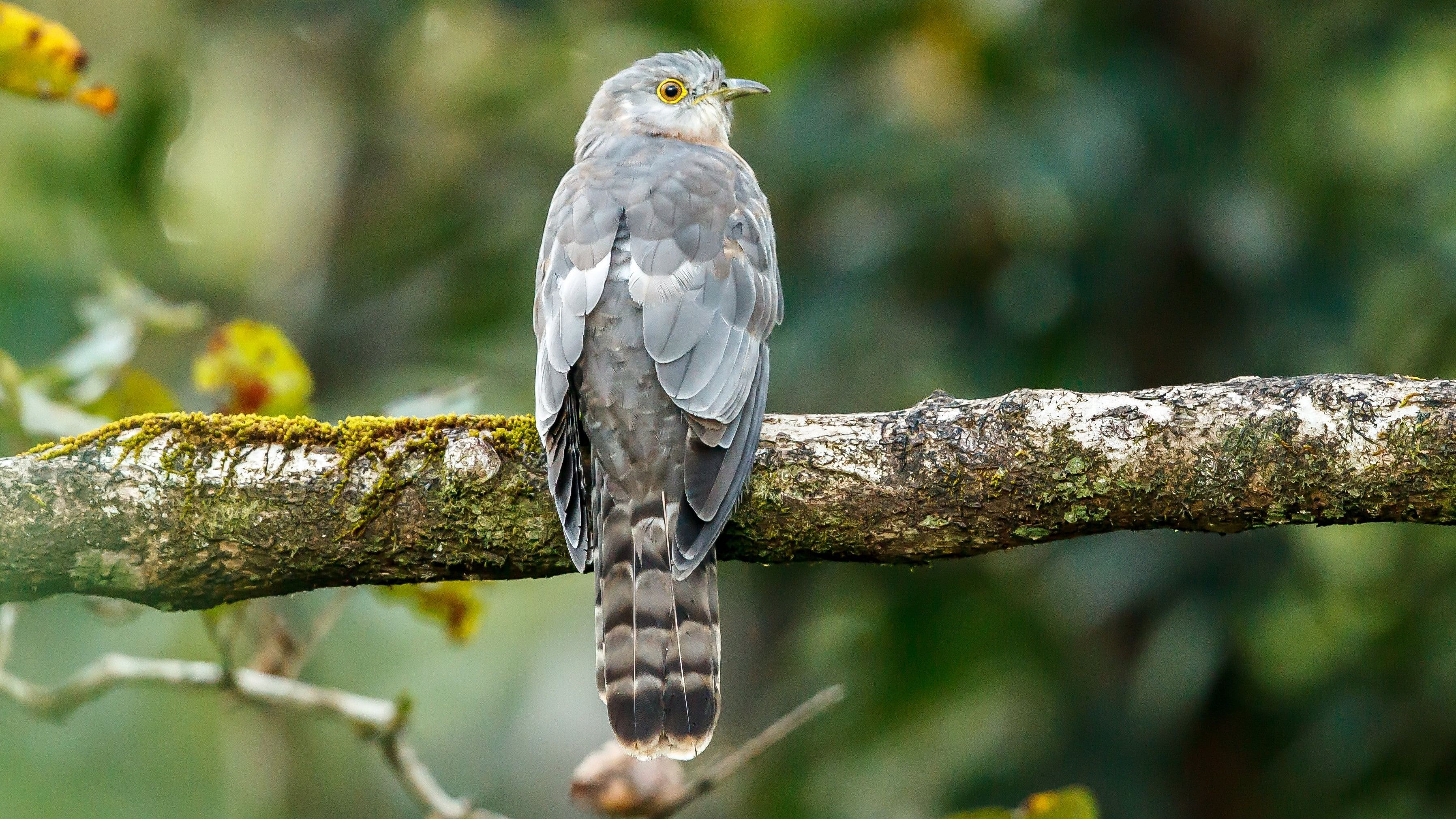
A loony call emanates at ungodly hours from the orchard by our cottage at Navilu Kaadu. The call starts off nice and mellow, but the pitch soon climbs and the incessant peehu-peehu, peehu-peehu begins to sound more like brain-fever, brain-fever, reaching a crescendo. It then ceases altogether, only for the creature to work itself up all over again.
That is our insomnolent, resident male common hawk-cuckoo (Hierococcyx varius), aka the brainfever bird, making the most of a moonlit summer’s night to prospect for a mate. He calls through the day too, perched high up on our baage mara or the sizzling tree (Albizia lebbeck). Wonder when he catches a wink!
The calls of the lovesick male common hawk-cuckoos echo across the fields in summer, their peak mating season. Mercifully, unlike the male, the female isn’t ‘possessed’ and gets by with grating noises for calls. Common hawk-cuckoos inhabit most parts of the Indian subcontinent and prefer wooded groves in semi-evergreen and deciduous forests (forests where trees shed their leaves seasonally).
The bird was immortalised in the iconic melody ‘Bol re papihara’ rendered soulfully by Vani Jayaram, in the 1971 flick Guddi, though to me, the bird’s call is a tad frenzied to be considered melodious!
Unlike the other two birds in this series on birds with bizarre calls, the ground-dwelling Indian nightjar and the grey francolin, the common hawk-cuckoo is arboreal, and rarely descends to the ground.
These pigeon-sized birds resemble the Shikra, a small-sized raptor, in their flap and glide manner of flight and in the way they settle on a perch; hence the moniker, hawk-cuckoo.
While many birds are anisodactyls, with three forward-pointing toes and a single toe pointing backwards, cuckoos, like woodpeckers, owls and parakeets, are zygodactyls with two forward-pointing toes and two pointing backwards. This gives them a strong grip as they negotiate the network of branches in tree canopies.
Common hawk-cuckoos wear grey plumage with white and tan crossbars on their underbellies, and long, broad-barred tail feathers. Yellow-rimmed eyes with matching yellow beaks and feet add a sartorial touch! The sexes are monomorphic with little to tell the male apart from the female other than their sizes. Male birds are slightly larger than the females. Cuckoos are specialised feeders and mostly devour insects, with a sampling of berries and figs. Their superpower? Being able to gorge on prickly, hairy caterpillars whose guts are full of toxins. While other birds give these fuzzy worms a wide berth, for cuckoos, hairy caterpillars are par for the course.
The common hawk-cuckoo clutches the doomed worm in its beak, snips off one end like a toothpaste tube, and thrashes out the poisonous innards against a branch before consuming it. The caterpillar’s hairs layer the soft, thick lining of the cuckoo’s gizzard. The cuckoo then regurgitates the layer of hair as a pellet. Given their caterpillar fetish, cuckoos keep infestations in check, extending valuable ecosystem services. As with several cuckoo species, common hawk-cuckoos are brood parasites. Their nesting season matches with that of the jungle babblers; between March and June. The cuckoo mum stealthily lays a single teal egg in a jungle babbler nest (whose eggs are also similarly coloured). Jungle babblers (Argya striata) are social nesters. Several females lay eggs in a single nest, incubate, feed and raise the young together. The canny cuckoos outsource child-rearing to unsuspecting babbler mums. The cuckoo hatchling generously inherits its parents’ cunning and edges out the babbler’s egg.
Chatty flocks of jungle babblers populate the region in and around Navilu Kaadu, ensuring our common hawk-cuckoos have a steady supply of foster parents for their progeny. They are known to parasitise golden oriole and shrike nests too. Common hawk-cuckoos are classified as of ‘least concern’ by the International Union for Conservation of Nature (IUCN), though rampant pesticide use could steadily diminish their food source.
Rooting for Nature is a monthly column on an off-kilter urban family’s trysts with nature on a natural farm.
The author chipped away at a software marketing career before shifting gears to sustainable entrepreneurship and natural farming. She posts as @ramyacoushik on Instagram. Reach her at bluejaydiaries@gmail.com